Another milestone for Sega-16, and the same month as our 10th anniversary! Our staff and readers have shared their 16-bit gaming experiences month by month for years now, and we reach a landmark with this installment! This month, we share games that we discovered through Sega-16.
Blades of Vengeance By Ken Horowitz
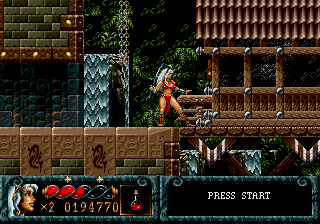 Having been a Genesis fan since its launch, I thought there weren’t any Genesis games that went under my radar. However, over the course of the past decade working on Sega-16, I’ve found more than a few that I had never experienced. Of all of them, Blades of Vengeance stands out most to me. This is one excellent game! I really like the exploration element it brings to platforming, and the multiple characters give it some great replay value. The graphics are excellent, the gameplay is solid, and the stages are nice and challenging (but not cheap).
Having been a Genesis fan since its launch, I thought there weren’t any Genesis games that went under my radar. However, over the course of the past decade working on Sega-16, I’ve found more than a few that I had never experienced. Of all of them, Blades of Vengeance stands out most to me. This is one excellent game! I really like the exploration element it brings to platforming, and the multiple characters give it some great replay value. The graphics are excellent, the gameplay is solid, and the stages are nice and challenging (but not cheap).
Thinking back about how it could be possible that I missed Blades of Vengeance, I remember that my local video store was really selective about which titles it bought. Since the games were for renting, only the major names found their way onto the shelves, and we had to go two towns over to a major chain to find anything different. Being in high school and without a car, this was not something that we could do regularly, so there was little chance that I would have ever been able to experience Blades of Vengeance. It’s a good thing I got to play it to take a few screen shots for our review, then! I enjoyed it so much that I decided to buy it for my own collection. It took me some time to find a complete copy for a decent price, but I finally found one, and I’ve enjoyed it quite a bit. Many thanks to The Coop for reminding me about this awesome game!
Yu Yu Hakusho _ Makyo Toitsusen By Sebastian Sponsel
Why was this one never released in Europe or the US? Was the license, based on a critically acclaimed anime series, such a hindrance to keep most western audiences from ever experiencing this gem? Of all the regions outside of Japan, only Brazil realized the potential this fighting game had. A 4-way, all-out, simultaneous brawl was a pretty novel concept in the 16-bit era and a fun one to boot! Seriously, this is one entertaining fighting game, and if it wasn’t for the review on Sega-16, I doubt if I would have ever heard of it.
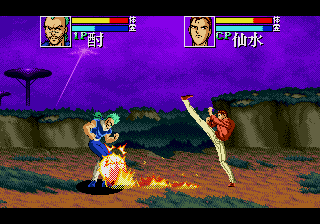 I was so intrigued by the concept and the alleged technical prowess of the game that I eventually set out and tracked down a Japanese copy. To date, it’s still the single most expensive game in my entire Mega Drive Collection. And what can I say? It’s worth every cent! Yeah, there’s the occasional slowdown when there’s a lot going on at once (for example, when two players gang up on a third one with a barrage of special attacks at the same time during the space stage, with its semi-transparent looks ), but it doesn’t really hurt the gameflow much. Honestly, I’m still surprised at how smooth the game plays, even with four players at once, considering all the effects that have been crammed in there, like the scaling of the character sprites when they switch planes. And yeah, there may be some balancing issues between some of the characters, but I’m no fighting game expert, so it’s hard for me to pinpoint those instances exactly. But really, it doesn’t matter much. It plays great, it sounds great, it looks great, and it’s barrels of fun. Especially in 4-way multi-player. Try tracking it down as well. It’s rather rare, but in my eyes, it’s definitely worth it!
I was so intrigued by the concept and the alleged technical prowess of the game that I eventually set out and tracked down a Japanese copy. To date, it’s still the single most expensive game in my entire Mega Drive Collection. And what can I say? It’s worth every cent! Yeah, there’s the occasional slowdown when there’s a lot going on at once (for example, when two players gang up on a third one with a barrage of special attacks at the same time during the space stage, with its semi-transparent looks ), but it doesn’t really hurt the gameflow much. Honestly, I’m still surprised at how smooth the game plays, even with four players at once, considering all the effects that have been crammed in there, like the scaling of the character sprites when they switch planes. And yeah, there may be some balancing issues between some of the characters, but I’m no fighting game expert, so it’s hard for me to pinpoint those instances exactly. But really, it doesn’t matter much. It plays great, it sounds great, it looks great, and it’s barrels of fun. Especially in 4-way multi-player. Try tracking it down as well. It’s rather rare, but in my eyes, it’s definitely worth it!
Sorcerer’s Kingdom By Zebbe
It’s the 10th anniversary of Sega-16, its 100th Reader Roundtable feature, and I’m just sitting here in my underpants trying to write something. The topic is supposed to be “the best game you discovered through Sega-16,” but there are too many great games I’ve discovered through this site, and I haven’t played any of them this month. Because this month, I’ve pretty much only played one, and it’s not nearly among the best ones, though I discovered it here. It’s Sorcerer’s Kingdom.
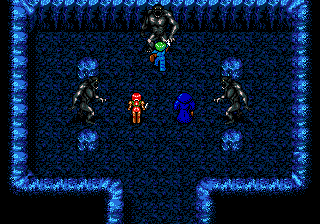 There are many mediocre RPGs of various kinds on the Sega Mega Drive. For example, the great sounding but poorly written Exile, Legend of Wukong with its many enemies and rehashed dungeons, and the king of mediocre Mega Drive RPGs – Sword of Vermilion, with its four game modes, fantastic soundtrack and oh-so-repetitive gameplay. Then there is Sorcerer’s Kingdom, which doesn’t have any big flaws or good stuff like the aforementioned games; it just doesn’t stand out in any way. Nothing is really good or really bad about it. It feels like the setting and story have been seen many times before, and the aesthetic department doesn’t bring any eye or ear openers.
There are many mediocre RPGs of various kinds on the Sega Mega Drive. For example, the great sounding but poorly written Exile, Legend of Wukong with its many enemies and rehashed dungeons, and the king of mediocre Mega Drive RPGs – Sword of Vermilion, with its four game modes, fantastic soundtrack and oh-so-repetitive gameplay. Then there is Sorcerer’s Kingdom, which doesn’t have any big flaws or good stuff like the aforementioned games; it just doesn’t stand out in any way. Nothing is really good or really bad about it. It feels like the setting and story have been seen many times before, and the aesthetic department doesn’t bring any eye or ear openers.
But I must give credit where credit is due. The shops with all the stats you need are very convenient and so is the magical map you have, which lets you teleport anywhere from most places. I also have to give it to NCS for the battles, which don’t have random encounters, perfect for the impatient control freaks, though I am not one of you. As you battle, you can walk around on the screen as in the typical strategy-RPG, and instead of levels, the characters gain strength corresponding to what they did in battle. For example, if they fought with a weapon and took some beating, they gain “offense” and HP. So while Sorcerer’s Kingdom is far from the greats such as Phantasy Star IV and Langrisser II, it still has its moments, and though I have only played it a few hours I feel like it’s worth to play to the end.
Ten years of Sega-16 have passed. Here is to ten more! I have no idea what my life or Sega-16 will be like then, but at the end of this year, my work on a new Mega Drive game and the new version of Pier Solar will hopefully bring some enjoyment to the viewers of the site.
Mortal Kombat II By The Coop
So there I was, feeling like utter crap, having spent part of the afternoon lugging around heavier items for my mother. I’d gotten a bit of sympathy from her in the form of a pair of cheap 32X games from the Walmart where I’d been accompanying her, and had just finished up flying several sorties in After Burner Complete. I was happy to play a nearly arcade perfect version of that arcade game, and was all set to jump to my second game; Mortal Kombat II.
I popped the game cart in, waiting to see what the 32X version of MK II had to offer after the rather disappointing Genesis version. Sure, the Genesis version was playable with good controls, but it had so much cut out, it was rather puzzling. It was like Probe didn’t even try all that hard, and just stopped when they ran out of memory instead of working to compress as much as they could into that 24Mb Genesis cart. But that was then, and now Probe had a 32Mb cart to work with. Could they make this game nearly arcade perfect?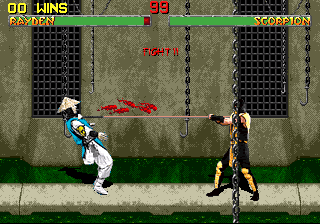 Well, the graphics were noticeably better, that was for sure. More colors, more bits and animations added to backgrounds, characters and fatalities… it was a considerable step up. Then came the sound. So many more voice samples and effects were included, that it really showed just how many were cut from the Genesis game. The music was pretty much identical, though it might have been a touch clearer. It’s hard to say, really. The gameplay was still solid, with good controls and all that. But after a number of play throughs and enjoying the stuff that got put back in, I still felt a bit… disappointed.
Well, the graphics were noticeably better, that was for sure. More colors, more bits and animations added to backgrounds, characters and fatalities… it was a considerable step up. Then came the sound. So many more voice samples and effects were included, that it really showed just how many were cut from the Genesis game. The music was pretty much identical, though it might have been a touch clearer. It’s hard to say, really. The gameplay was still solid, with good controls and all that. But after a number of play throughs and enjoying the stuff that got put back in, I still felt a bit… disappointed.
No ending images, the music still wasn’t a Genesis take on the foreboding arcade tunes, there were still voice samples missing… it wasn’t as close as an extra 8Mb suggested it should have been. I mean, the SNES version had the endings images (in tiny image form) in its 24Mb cart, so why were they still cut from this 32Mb cart? It was those kinds of thoughts that kept me from being as excited to own the 32X Mortal Kombat II, as I was to own After Burner Complete. Yes, MK II was much better on the 32X, but it wasn’t all it could have been… once again, thanks to Probe and their apparent inability to learn how to compress data and utilize cart memory better. That, or just laziness.
So yeah, that was my day of illness. A great port of a SEGA arcade classic, and a good port of an infamous arcade fighting game that made parents wet their beds at night as they envisioned the kind of dregs of society that little Billy and Sally would become after playing it. I didn’t hate the 32X port of MK II, or get into a table-flipping fit of rage-induced frustration over it, I just felt a little let down. That’s all. I still played the hell out of it, and my smile didn’t wane. The interesting thing is that later, I learned the 32X port was still a better port than the Saturn version of MK II that Probe inflicted upon us (dear God… what the hell happened with that port?). I picked that up for $2.99 at a Blockbuster, and still felt like I’d overpaid for that buggy mess of a game.
But, all in all, my time after Walmart was a day of gaming fun. Of streaking across the skies in an F-14 Tomcat, prior to slicing opponents in half with a razor-edged hat. I was sick and I was tired, but I had a pair of new games to enjoy, so what more could one ask for… besides to not be sick and tired?
Rolling Thunder 2 By Aaron Savadge
Over the past eight years Sega-16 has helped me get the most out of my favorite console, introducing me to new gaming loves I might never have even heard of otherwise like Ranger X and Granada. However I’d like to talk about a series I would have ignored had the site not convinced me to give it a second chance, Rolling Thunder. Let’s focus on the second game, my favorite of the bunch.
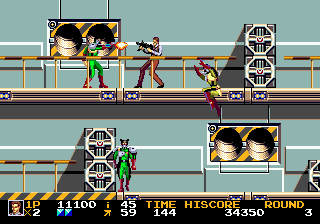 My only experience with the series beforehand was the black Tengen NES cartridge, which was decent but lacked the charm of the arcade cabinet I was ignorant of at the time. Because of this, I passed over its sequel for the Genesis many times. Man, was I missing out. Rolling Thunder 2 instantly impresses with stylish animation and a wonderfully jazzy soundtrack. The game drops you directly into a late ’80s, early ’90s action film with a less-than-subtle Bond styling. The fluid animation adds a lot of weight and realism to the characters without hindering the controls which could have doomed such a finesse driven title.
My only experience with the series beforehand was the black Tengen NES cartridge, which was decent but lacked the charm of the arcade cabinet I was ignorant of at the time. Because of this, I passed over its sequel for the Genesis many times. Man, was I missing out. Rolling Thunder 2 instantly impresses with stylish animation and a wonderfully jazzy soundtrack. The game drops you directly into a late ’80s, early ’90s action film with a less-than-subtle Bond styling. The fluid animation adds a lot of weight and realism to the characters without hindering the controls which could have doomed such a finesse driven title.
And that’s not all, it’s got two-player cooperative with both the Bond-expy “Albatross” and his sexy sidekick “Leila.” The game is brutally difficult but thankfully offers infinite continues provided by the hilarious password system that uses code words straight out of a clichéd spy film. The game never seems unfair and clearing a challenging level is so rewarding that it’s become a favorite co-op title for me and my girlfriend. The intensity of the action and the ease of jumping back in encourages you to keep trying and creates a perfect, addictive balance.
From the bright graphics to the tight gameplay and stellar sound and animation, everything about Rolling Thunder 2 is polished and classy. Thank you Namco for treating the Genesis to both this game and it’s wonderful, Genesis exclusive sequel and thank you Sega-16 for showing me the error of my ways. Now, why the heck haven’t you made another one, Namco?
Final Fight CD By Joseph C.
I originally came to Sega-16.com for the memories, but I didn’t expect to discover so much about the Mega Drive that I missed as a child. Of particular interest to me was the Mega CD which I never owned but always wanted. The main game I was attracted to was obviously Sonic CD, but I was surprised to learn when I began visiting this site, at just how many great titles were released on the system.
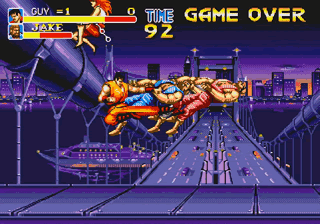 The most surprising discovery was the excellent port of the arcade classic Final Fight. This is a game that I vividly remember playing in arcades, and though I was limited by skill and the money in my pocket, I loved playing the game. So it was a delighted to discover years later that an arguably better version of the game existed on the Mega CD, a game which just this year I finally bought.
The most surprising discovery was the excellent port of the arcade classic Final Fight. This is a game that I vividly remember playing in arcades, and though I was limited by skill and the money in my pocket, I loved playing the game. So it was a delighted to discover years later that an arguably better version of the game existed on the Mega CD, a game which just this year I finally bought.
Final Fight CD’s most notable improvement is in the quality of the soundtrack but even without that, the full character roster and the two player mode makes it special in a way that is hard to appreciate today. I still find it as challenging and punishing as the arcade version even on “easy” and the limited continues has insured that those who want to see it through will have to get good at it.
I may like Streets of Rage 2 better, but I can definitely appreciate that it wouldn’t have existed without Final Fight.
Scooby-Doo Mystery By Aaron Wilcott
Sega-16 turns 10 this month? Wow, crazy to think 2004 was so long ago now. I may not have been around the site for nearly as long (joined in 2009), Sega-16 has definitely affected my knowledge of the Genesis library. The many reviews and features have introduced me to a great many of titles, but one stands out as the absolute most surprising and amazing. I speak of a game few even realize exists, Scooby-Doo Mystery.
Just by looking at the name, you might think Scooby-Doo Mystery wouldn’t be particularly great. You therefore forget how many amazing licensed titles lined the Genesis library then, because Scooby-Doo Mystery is no exception. Unlike the SNES version, which is a straight-up side-scrolling action game (nothing too fancy), the Genesis version is a full-blown graphic adventure game, like those that LucasArts made back in the day. It really has to be played to be believed, and it’s quite stunning that a game like this was even made. I can’t think of many developers who would go to this much effort for a licensed game.
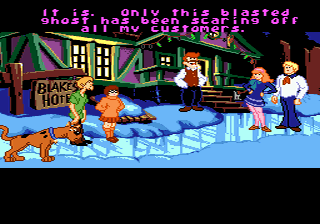 The first aspect you notice with Scooby-Doo Mystery is the graphics. The sprites are reasonably large, there’s a lot of varied animation, and the color usage is particularly well planned out. All the various screens of the game look great too; I didn’t see a whole lot of dithering going on. The most incredible aspect is the sprite shrinking, which looks real time to me at least. Yes, Shaggy and Scooby will shrink in size as they walk away from the player’s point of view, or enlarge as they draw near. Although the game does not make use of the Mega Mouse, the controls and interface are very usable and there aren’t any instances where you have to act fast to solve a puzzle, making this a most pleasurable and easy going experience. Perhaps the best part is the game includes two different adventures to play, one at the Ha-Ha Carnival and the other at Blake’s Hotel. Considering the game does not have battery-backed SRAM for saving and instead uses passwords, having two shorter adventures instead of a really long one was the better decision.
The first aspect you notice with Scooby-Doo Mystery is the graphics. The sprites are reasonably large, there’s a lot of varied animation, and the color usage is particularly well planned out. All the various screens of the game look great too; I didn’t see a whole lot of dithering going on. The most incredible aspect is the sprite shrinking, which looks real time to me at least. Yes, Shaggy and Scooby will shrink in size as they walk away from the player’s point of view, or enlarge as they draw near. Although the game does not make use of the Mega Mouse, the controls and interface are very usable and there aren’t any instances where you have to act fast to solve a puzzle, making this a most pleasurable and easy going experience. Perhaps the best part is the game includes two different adventures to play, one at the Ha-Ha Carnival and the other at Blake’s Hotel. Considering the game does not have battery-backed SRAM for saving and instead uses passwords, having two shorter adventures instead of a really long one was the better decision.
The only part of Scooby-Doo Mystery that is really lacking is the sound. All the music tracks sound unfinished, lacking depth and some instruments. It’s adequate but the Genesis is capable of far better. Though to be fair, a lot of graphic adventures for MS-DOS sound no better on Soundblaster-16, which was the most common sound card of the day. The game includes a bunch of voice samples too. Even though they are scratchy, they are pretty decent. Too bad they’re extremely quiet so you probably won’t be able to hear them very well.
If you like graphic adventures, even just a little bit, you owe it to yourself to play this hidden gem of a Genesis game. Even if you don’t at all, you must still at least try Scooby-Doo Mystery, just to see the Genesis handle a graphic adventure with ease. It’s just one more example in the long list of games the Genesis does really well. If this little write-up has inspired you to try this game out for yourself, don’t thank me; thank the best Genesis site in existence, Sega-16!
Pier Solar By Frank Villone
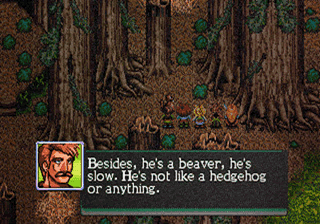
Spanish learning with the Sega Genesis!
For the 100th edition of this fantastic Reader Roundtable, I reflected on what single title was the best I had ever discovered from Sega-16! It had to be something that I would have never found just by browsing the local retro shop! And so, it had to be Pier Solar, the ground-breaking RPG released in 2010 for Genesis, sold online and never in stores! I only knew about it because of Sega-16 and its forums. WaterMelon did have a website up, but I really would never have found it without being linked there. I have wanted to start a new quest completely in Spanish, just to practice and learn more of the language. It has been a few years since first completing “the biggest 16-bit adventure ever,” so now seemed perfecto!
Pier Solar is the only title in the Genesis’ whole extended library that can be paused for a bunch of options, including switching the language anytime! Reading dialogue can be attempted in Spanish first, then flipped to English to double-check its meaning. This approach might even replace much of the need to use a Spanish dictionary!
And so Hoston is wandering around with Alina, looking to buy some herbs (hierbas) from that guy who hangs around in the caves (las cavernas)! I am newly impressed with the colorful, detailed graphics, and both excellent soundtracks!
While I have just begun this new quest, already this has to be my single favorite way to study Spanish! I never expected to use my Genesis for this purpose, and I wonder if WaterMelon realized they were creating an awesome method of foreign-language study!
Star Trek Star Fleet Academy: Starbridge Simulator By KitsuneNight
So here we are then, the 100th Reader Roundtable. So what have I been playing then? Well, uh, a lot actually. And after a nearly three month odyssey, I finally managed to marry my American 32X with its intended counterpart. The American model 2 Mega Drive. (yes, Mega Drive). So, after nearly three long, long months I can finally play my 32X games on my “Shroom of Doom,” and that is what I am going to talk about in this 100th Reader Roundtable. What best place to tackle multiple games then this occasion and….
Hey get back here! It’s the just 32X… it won’t be that bad! Don’t look at me like that.
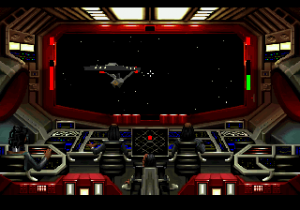 So what have I been playing then? Star Trek Star Fleet Academy: Starbridge Simulator (talk about a mouthful).
So what have I been playing then? Star Trek Star Fleet Academy: Starbridge Simulator (talk about a mouthful).
One of my favorite titles and one of the reasons I actually wanted a 32X… (Don’t look at me like that). It was one of my favorite SNES titles… would you stop looking like that? And even though I haven’t played this game in ages, and I am terribly rusty and making a lot of beginner’s mistakes (which are bloody embarrassing, if I am honest). It’s still a game I rather like, even if I am having trouble with the controls, being used to the SNES layout for it.
The game puts you in the role of a would-be captain in training. With the difficulty steadily increasing as you move up from ship to ship from the scientific Oberth class up to the Constitution class (the Enterprise, in other words). I’m not quite sure if the highest level is the Constitution class or the Excelsior, but I’m sure I will find out sooner or later. But it’s not all combat either, like any Star Trek game. It involves exploration and diplomacy as well, you can’t always go in all guns blazing. Sometimes you have to explore, use diplomacy, subterfuge, or play the detective. Sometimes all of this at once, which makes the game worth playing, a few times at least. You can also interact with your crew members but it doesn’t have much of an impact on the game.
Unfortunately, the game has received only a minor face-lift. Compared to the SNES version, the screen is slightly bigger, the colors are more vibrant. The view screen is somewhat bigger, the 3D models of the ships are slightly better and the planets are textured this time around. They are just red flat-shaded spheroids in the SNES version- very Star Trek TOS, I am sure you will agree – but that’s about it. You can choose your character’s name and gender, but the back of your sprite (the most you will ever see of your captain) is still the same, and oddly somewhat Vulcan. The least they could have done, was change that during the porting.
And that’s all it is, a decent port of a decent game. If you aren’t already a fan of it, then this won’t win you over, but I like it. It’s based on the original series and was released before DS9 and Voyager, so don’t expect anything from those series or TNG either. As flawed as it is I still like it, which is about par for the course for the 32X, deeply flawed but likable.

Pingback: Sega-16 Articles | The Essential Malady